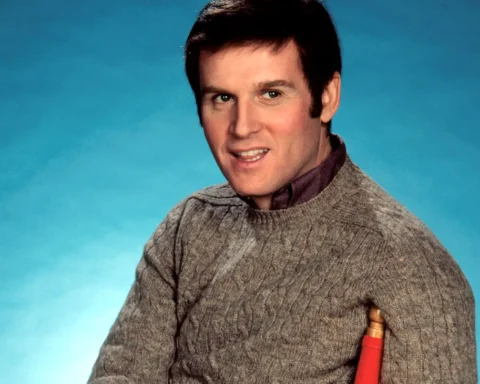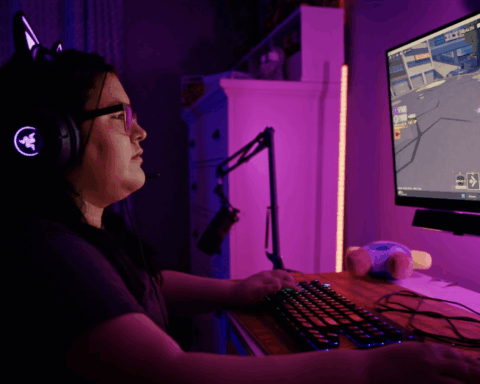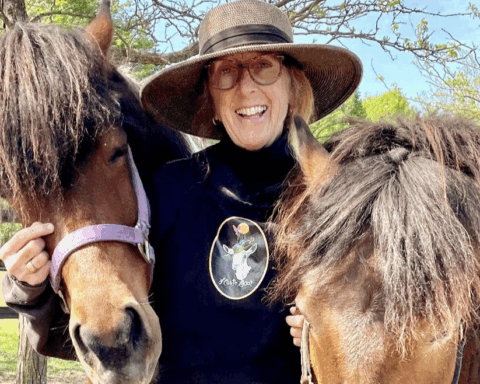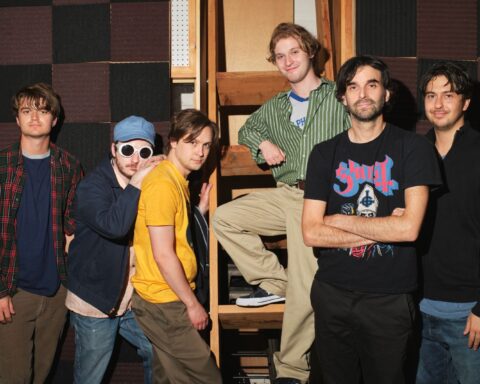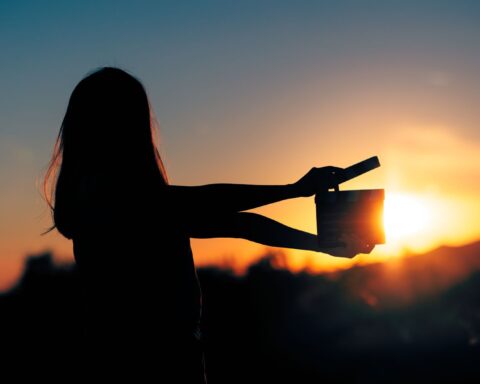The new documentary Out of Fashion shows how Estonian designer Reet Aus has changed the fashion industry for the better. Thousands of factories in the Third World produce tons of toxic waste making clothing for corporations. Aus realised that the only way to change the industrial model was from the inside. Out of Fashion follows Reet Aus’s journey from Tallinn through the fashion stages of Europe and the cotton plantations of South America into Bangladesh’s epicentre of mass production.
Five years ago Reet Aus started making an educational film with filmmakers Jaak Kilmi and Lennart Laberenz about the dark side of the fashion and textile industry. But interesting things started to happen. “When we went to Bangladesh ,I started to work with the Bangladeshi company and it was really an interesting journey…. we went all over the world to see how the industry works….It changed my way of working and my career and everything.”
On her website, Aus’s story begins, “The year is 2035 and I am alive…Little by little, goods ceased to be exchanged for profit, banks boarded up their doors and life in cities was replaced by small communities that supported each other with autonomous electricity, telecommunication, decentralized electronic money and agricultural systems.”
A year ago Reet Aus and partners got the certification for upmade.org, a software that gives brands and manufacturers a holistic waste analysis. Using production, fabric and design information from a brand’s original order, UPMADE® Software conducts a waste analysis to determine what leftover materials are available and an environmental analysis that determines what resources can be saved by upcycling. Upmade has come up with a restricted substance list of chemicals harmful to workers, customers and the environment. Xylene, one of the 17 restricted organic solvents with the most pronounceable name, was identified by a French chemist Auguste Cahours in 1850 as a constituent of wood tar, and appears in small quantities in gasoline. Long-term exposure leads to headaches, irritability, depression, insomnia, agitation, extreme tiredness, tremors, impaired concentration and short-term memory.
Upcycling production redesigns textile leftovers, the products and the production process and reduces production inefficiencies. UPMADE® Certification is a guideline and a verification system helping manufacturers to effectively integrate upcycling production and circular economic principles into their business. The European Commission has committed itself to a circular economy, of which Joan-Marc Simon, director of Zero Waste Europe states, “In order to reap the potential that the Circular Economy has to offer it is necessary to address material management, toxics, energy and economic incentives simultaneously. This holistic approach is the silver bullet to trigger a multiplicator effect on employment, resource dependency, fight against climate change, health, agriculture and reduction of marine litter.”
Reet Aus tells us, “Upcycling is basically a design method where you take the material or fabric as it is and you give value through the design…you just make a new product out of it. It’s like the value of the waste goes up…. recycling is like the different method where the value of the fabric goes down. It’s like downcycling because you have to add energy and water and ….put some resources into it to get something new. But upcycling deals with the material as it is. That’s the main difference.” Considering that the garment material is textile waste saved from a landfill, the final product is environmentally friendly. Reet continues, “We started with waste mapping and the main aim was just to gather material for my own designs. It’s been growing and growing and now we have quite a few designers selling items through Trash to Trend and we have these Trash to Trend workshops. Like last year we opened sustainable design in the Estonian Academy of Arts. I’m working as a senior researcher there and one project workshop that we do ….the students have to map their waste and find their leftover materials and design something out from that…..[For the] last four years I have been working with Bangladesh ….to implement the upcycling into the production cycle.”We ask Reet why she compares fast fashion to cancer, a thing that grows for its own sake and not for the sake of an organism. How is her fashion design something different?
Reet responds, “Our brand Reet Aus that we are producing in Bangladesh is born only because we wanted to solve this huge leftover issue in that industry….Implementing this upcycling method into the mass production is something I have never done before because it has been an extremely complicated thing to do. The main reason is, the companies that we have been ordering from—the manufacturers, they actually even don’t know how big their wastage [is]. It is totally a money driven business and…a light industry and very easy to move from one place to another. If the factory doesn’t give them the price they want, they just go to another place. The research that we carried out shows that the average is 18%… waste that the industry produces. So it’s an extremely big amount of totally good new fabric that ends up in landfills. Our project is how to solve that issue, how to bring the environmental impact down. That is the reason why we always say how much energy we have saved and how much we save in water with our upcycling products.”
We ask Aus how how thinking globally and acting locally is part of her practice.
Reet says, “We have to know the big picture. What is happening in the world because we have only one earth and we all would like to live on it. You have to know that everything you do… you influence something and even small acts can have [a] big influence. But supporting the local production, local design, local everything that’s close to you, it’s always the best thing to do. You have to know to whom you give your money. That’s kind of the key to understanding.…I would like to support ethical and nice activities. When the big corporations can be transparent then it’s totally different. With local businesses you can really follow how they produce their stuff, where they source their material, how it is produced—are they well paid?—all these things are very, very important issues.
Filmmaker Jaak Kilmi tells us, “I don’t see myself as an activist type of filmmaker ….I just like to make films about activists.” Six years ago in Berlin he met his collaborating director for Out of Fashion Lennart Laberenz, a friend of Reet’s known as a good multimedia artist and cinematographer. Kilmi says, Lennart had worked in many places around the world, speaks languages and has a great sense of humour. These were the criteria for a promising collaboration.“During these five years we had our high and low moments, indeed. It is very difficult to have a smooth working process when one of the directors is based in Tallinn, and [the] other one in Berlin. And it makes the process expensive too. It worked very well when we had shootings in Bangladesh/Peru/NYC, but….we needed to plan all our moves according to our availability …We both were very busy also with our other projects. It made the editing process pretty long….it was still me who made the last version of the film.”
Reet remembers, “We had so much material.,,,Three different movies could be cut from the same material, about social issues and about every country where we went, and we had life stories about the workers. There was extremely interesting material left out….The movie ends with one point but ….The story continues, I would say.”
Out of Fashion screens in Toronto on Saturday, Nov. 5 as part of the EstDocs Film Festival and will be introduced with a Pop-up Reet Aus Fashion show featuring singer Jarek Kasar and his original music from Estonia with special guest Reet Aus. Reception at 7 PM at the Hot Docs Ted Rogers Cinema& 506 Bloor St. W. @ Bathurst, Toronto. Tickets for the event are $15, which includes a reception, fashion show and the screening of the documentary. Please visit EstDocs.com for more information.





